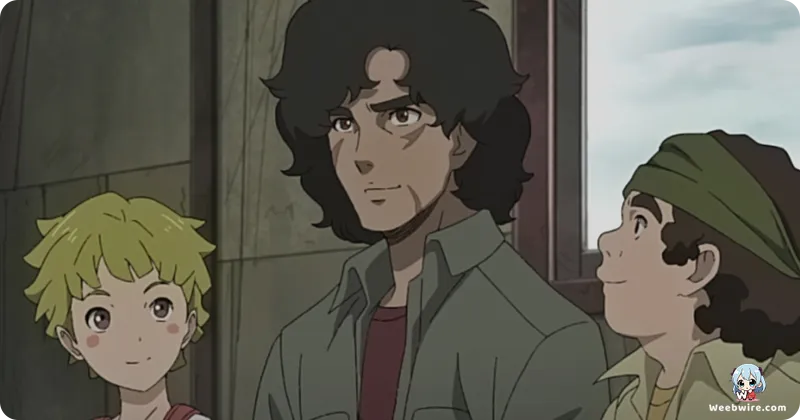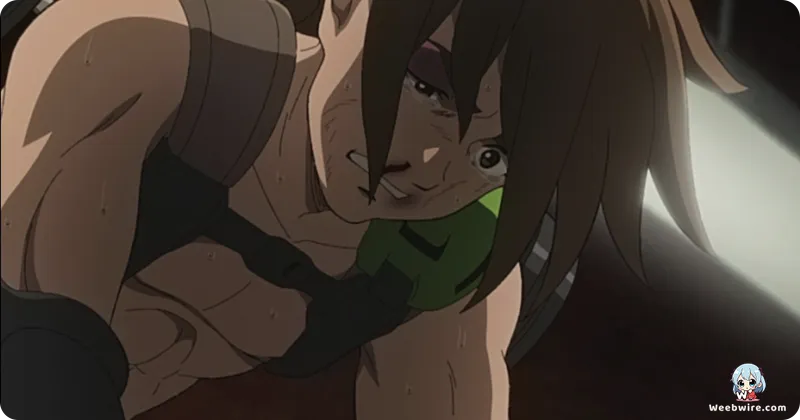Beyond the Fights: The Untold Story and Artistic Vision of MEGALOBOX 2: NOMAD

In the ever-evolving world of modern anime, MEGALOBOX 2: NOMAD stands out as a truly compelling sequel. It is celebrated not only for its intense boxing action and gritty aesthetic but also for its profound narrative depth and meticulous craftsmanship. This acclaimed series serves as a powerful homage to the legendary boxing manga, Ashita no Joe, which originally inspired its creation for its 50th anniversary. Rather than a direct remake, the creators skillfully crafted an original story, capturing the spirit and core themes of Ashita no Joe within a unique futuristic, dystopian setting. This approach offers a fresh perspective on timeless struggles, making it accessible to both new viewers and long-time fans.
A Distinctive Retro Aesthetic
One of NOMAD's most striking features is its distinctive retro visual identity. Deliberately moving away from modern high-definition, TMS Entertainment employed techniques such as a lower frame rate and a subtle CRT filter. This artistic choice evokes the nostalgic feel of classic cel-animated anime, creating a gritty, vintage texture that perfectly complements the underdog narrative. It immerses viewers in a world that feels both futuristic and deeply rooted in a bygone era, significantly enhancing its unique atmosphere and emotional resonance.
The Power of Sound
The series' auditory experience is equally impactful, thanks to composer mabanua's exceptional work. His signature hip-hop-infused soundtrack is integral to the series' identity, driving the narrative and amplifying emotional beats. Mabanua's blend of jazz, hip-hop, and electronic elements creates a raw, sophisticated soundscape that mirrors the urban decay and the characters' internal battles. This elevates every scene, from pulse-pounding fights to quiet introspection, adding another layer of depth to the storytelling.

A Hero's Fall and Redemption
While the first season chronicled Joe's meteoric rise, MEGALOBOX 2: NOMAD delves into a significantly darker, more introspective chapter. It unflinchingly portrays Joe's decline and his harrowing battle with personal demons following his triumph. Now known as Nomad, he is a broken man, tormented by loss and addiction. The sequel bravely explores profound themes of trauma, guilt, and the arduous path to redemption, offering a raw depiction of a hero's fall from grace. This significant thematic shift transforms the narrative into a nuanced character study, showcasing the creators' commitment to exploring the complexities of the human condition with remarkable honesty.
The Evolution of 'Gear'
The concept of 'Gear' also evolves meaningfully in NOMAD. In the MEGALOBOX world, Gear refers to exoskeleton boxing equipment. Joe's iconic decision to fight 'Gearless' in season one was a powerful symbolic act of defiance and authenticity. In NOMAD, new types of Gear and its role in society are re-evaluated, serving as a metaphor for the burdens and advantages people carry in their lives. This thoughtful integration of sci-fi elements provides a deeper philosophical underpinning, distinguishing it from many other sports anime.
Finally, Hiroshi Shimizu's distinctive character designs, with their rugged, exaggerated features, reinforce the series' grounded realism. These designs, reminiscent of classic animation yet distinctly contemporary, ensure that the characters' struggles and emotions are palpable and deeply felt by the audience. The collective genius of TMS Entertainment has forged a deeply resonant exploration of human perseverance, captivating audiences with its unparalleled fusion of retro charm and profound modern thematic depth. MEGALOBOX 2: NOMAD truly stands as a testament to thoughtful storytelling and artistic vision in the anime landscape.
Credits
MEGALOBOX 2: NOMAD
Author
Original Work (inspired by Asao Takamori & Tetsuya Chiba's Ashita no Joe)
Cover Art
Hiroshi Shimizu (Character Designer)
Studio
TMS Entertainment
Publisher
TMS Entertainment
Producers





